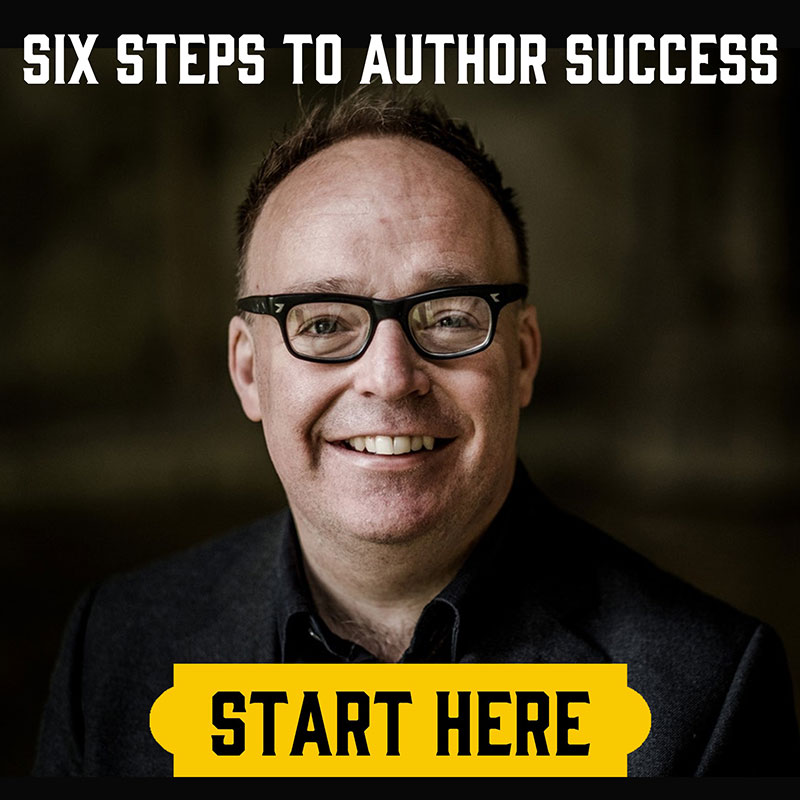Writing Effective Pitches as an Author

We indie authors understand the value of control after having little for centuries. The benefits are obvious now. If we can manage our own production schedules, we can rapid release series. If we can lower our own prices, we can organise a promotion. If we can establish communication links with our own readers via a mailing list, we can direct their attention to whatever platform or retailer best benefits our business. This is the argument indie champions have had against signing away rights to traditional publishers for over a decade. As a result, many of us now control more aspects of our businesses than authors of the past could possibly imagine.
Some community members run seven-figure businesses, making a small fortune through their own websites. To them, retailers are a secondary target. Free from corporate control, they manage vast mailing lists, self-fund projects they fully control, fulfil their own merchandising needs and even produce acclaimed screen adaptations of the books they write. The freedom is great, but even tireless indie authors eventually realise that pure independence has a glass ceiling. As much as we hate to admit it, we can’t do everything ourselves. If we want to keep growing, at some point we must outsource work, leverage someone else’s audience or license rights.
Occasionally partners will approach you with opportunities, but that isn’t always the case. In many instances, as an author, if you want to achieve a particular goal, you must make the first move — often in the form of a pitch. But how do you write an effective one? Historically, this process was the standard route for authors, but many indies have never done it. Master it, though, and you can pry open opportunities you would never have the contacts or bandwidth to capitalise on alone. In today’s blog post we’ll walk through the principles of crafting an effective pitch and craft a template as we go to help you put the theory into practice.
Step 1: Show Your Research
Lots of popular authors, changemakers and influencers receive pitches. They ignore most. Why? It’s because most pitchers immediately ruin their chances by revealing that they’ve done no research. Some, for example, ask to be a guest on a podcast. Does that podcast take guests? They would know if they listened to a handful of episodes. Others, for instance, aim to get a translation deal with a publisher for their horror novel. But does the publisher work on horror projects? In this case, no. Getting it wrong wastes your time but also makes you look unprofessional. Hence, rather than sending a cold email that shows a lack of research, consider this more tailored opener:
Dear [Enter Contact Name],
I’ve been an avid follower of you podcast / blog / work since I first discovered you on [include personalised context of an appearance they made / book or blog post they wrote].
Whether you’re looking to license a translation deal, appear on their podcast or co-write a book, proving that you’re at least familiar with the person you’re pitching and their work is a strong way to start. Finding a blog post they’ve written or watching a few speeches they’ve recorded for YouTube doesn’t take long, but it makes you far more likely to grab their attention. At the very least, it proves you aren’t just cold emailing them with an identical pitch you’ve also sent to a hundred other prospective contacts.
Step 2: Introduce Yourself
Once you have their attention, next you need to introduce yourself and say why you’re contacting them. Generally, this is where authors split into two categories: either they list every detail of their career and lose their reader, or they’re too afraid to appear boastful and share nothing of interest. Generally, a balance is necessary. Consider the following approach:
My name is [your name here] — [retailer name] bestselling [genre] author and finalist in [recognisable award]. Since [year you started publishing], I have had [number] paid sales, most of which have been in [recent period]. While I’m not a household name, I’m growing and have become popular in [relevant community], partly thanks to my [large number] of [social media followers / email subscribers].
My latest novel, [new book title], will launch on [date]. It’s around [number] pages in print and follows a [character] who [partakes in an activity that provides an interesting hook]. The book discusses [relevant themes for the pitchee] which I know [interest your audience / aligns closely with a project you managed]. As we seem to have a lot of overlap, I think working together would benefit us both and so would like to suggest [explain potential project / appearance]. I’ve attached the full blub of [new book] for more information. (Let me know if you want a free review copy.)
Short and clear, this section introduces you, adds enough social proof to demonstrate that you’re a serious contact, outlines your current project and goal, and hints at why it might interest your pitchee. In essence, it sells you. Where the pitch lacks proof of success, it suggests you’re seeing growth and will become a more promising contact in the future.
Step 3: Mention Common Contacts
Next, it helps to include a paragraph where you mention any mutual contacts your pitchee might recognise. These could be big names or simply people you know they trust and respect. Perhaps they’ve worked with them, interviewed them or — if they’re a publisher — hired or represented them. Mentioning international conferences is a useful way of bringing up these sorts of connections. The idea here is to create the impression that you swim in similar social circles. A short paragraph like the following one can work well:
I’m a regular visitor at [event they may attend] and can often be found hanging out with [recognisable names / mutual contacts]. Indeed, I have [worked on a project / appeared on a show] managed by [a mutual contact]. So far, to promote [new book title], I have also recorded a podcast interview with [mutual contact] and will soon record a session with [recognisable name].
The primary purpose of this section is to build trust. If you’ve worked with someone your pitchee likes and trusts then you’re also likely to turn out to be someone they like and trust, right? Be honest. Don’t embellish or fabricate the truth because doing so can backfire. If you genuinely don’t have any mutual or recognisable contacts, it’s better not to mention any at all. That said, the beauty of writing pitches in this way is that you can usually either strike up a connection before you write your pitch or find at least one you share through research.
Step 4: Provide Relevant Experience
As you approach a closing statement, it sometimes helps to include relevant experiences you have that could interest your pitchee, even if they aren’t the primary focus of your pitch. The experience doesn’t have to be in the author realm, either. If you’re a debut author who can’t provide industry-specific clout, for instance, the value you showcase could come from something you’ve done before venturing into the book world. You could have relevant insights that your pitchee holds in high esteem. Consider a short sentence like this one:
Besides writing, I have worked in [professional area] field as a [job title] and [job title] for [number] years where I managed [relevant project]. I’m also happy to [discuss this work in an interview / apply these skills to our project] if you think it would be useful.
Some authors might have never written a book before their current one but have worked on a seven-figure crowdfunding project for a non-profit. If that’s you, could you provide insights to an interviewer or expertise to a potential collaborator? Absolutely! Likewise, you might not understand marketing but have experience working in trad publishing, editing the book world’s biggest names. This section is not about listing a generic bio; it’s about providing extra information that bolsters faith in you to deliver added value on your proposed pitch.
Step 5: Use a Strong CTA
Calls-to-action (CTAs) are a marketer’s favourite trick. If you’re unfamiliar with the terminology, a CTA is simply a direct command that you include in the end of a piece of copy that tells your reader what you want them to do. They might seem pushy, but countless studies indicate that including CTAs in persuasive writing improves conversions. In a pitch to a potential collaborator, your CTA paragraph should resemble the following message:
Let me know if you would [like to work with me on this project / have me appear on your show]. I appreciate the opportunity and am happy to discuss [new book] or anything else that interests you. Either way, I look forward to listening to you speak [at event / on a platform they use] on [the date of upcoming feature].
Best,
[Your Name Here]
The first sentence of this paragraph is the actual CTA. The rest, though, is equally useful. Firstly, it demonstrates that you will continue to support them either way, which paints you as a rational person who isn’t purely looking to benefit from them. And, secondly, knowing that they will likely encounter you in the future is often enough to persuade many potential contacts to say yes, particularly if your proposed collaboration is a small commitment, as they don’t want to disappoint someone they might actually meet in the real world.
Take the time to personalise your pitches using this template or create a similar one to meet your needs and you will open your author business up to new opportunities no single person could possibly achieve alone. Remember, though, that a pitch only creates a great first impression. If you want that potential contact to speak highly of you, and possibly be a reference in future pitches, you must deliver on your end of the deal. That is the most effective way to maintain professional momentum.

Daniel Parsons
Dan Parsons is the bestselling author of multiple series. His Creative Business books for authors and other entrepreneurs contains several international bestsellers. Meanwhile, his fantasy and horror series, published under Daniel Parsons, have topped charts around the world and been used to promote a major Hollywood movie. For more information on writing, networking, and building your creative business, check out all of Dan’s non-fiction books here.
Grab Your SPF Freebies!
Sign up to receive your SPF starter package, which includes a free 3 part video series on getting started with FB ads, and inspirational and educational weekly emails.

